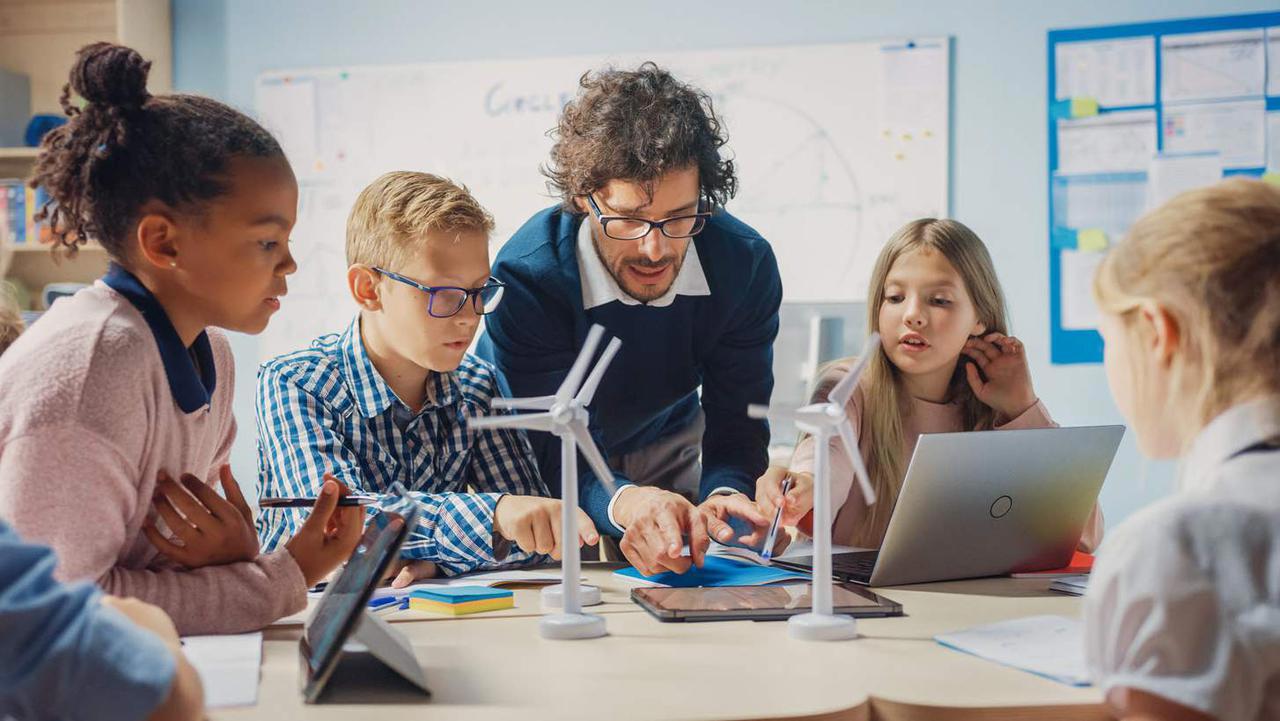
Childhood is full of light-bulb moments, and lessons about energy and electricity help your kiddo understand the forces that power our lives, and use energy in eco-aware ways.
On the home front, we can all save electricity by turning off lights and putting on jumpers instead of heaters, and a switch to renewable energy is a positive move for the planet.
Instead of burning through non-renewable resources, like oil, coal and gas, to create electricity, renewable energy is made using natural resources that never run out.
Sun, wind, earth and water can all generate clean energy, and because knowledge is power, here’s how you explain different types of renewable energy to curious kids.
1. Solar energy for kids
The Sun’s light and heat enables life on Earth, and while this yellow dwarf star is busy driving our seasons, weather, climate and ocean currents, it’s also creating solar energy.
There are two main solar power technologies in the mix:
Solar photovoltaic (PV) converts sunlight straight into electricity using a solar PV cell.
Solar cells are the magic part of solar panels and they’re usually made of silicon. These cells absorb particles of light (photons) which dislodge electrons from their atoms to produce a flow of direct current (DC) electricity. A solar inverter switches the DC electricity to alternating current (AC) electricity, for home use.
Excess power is fed into the electricity grid or batteries, and more light and more panels equals more power. An ‘array’ of solar panels on a roof, or in a solar farm, generates bountiful power on bright days.
Solar thermal technology converts sunlight into heat.
Solar energy can be used to heat air or liquid to warm a room or fill a hot water tank. Solar air-conditioning uses heat energy to make things cool, and thermal energy can be used to create steam to drive an electricity generator.
Concentrated solar thermal technology uses a field of mirrors to reflect sunlight onto a receiver, which transfers the Sun’s heat to a storage system. This huge bank of power can be used on-demand, which means energy is available night and day.
Back at home, a DIY solar oven will give your family a taste of the Sun’s power, and a solar kit is a STEM-tastic way for older kids to experiment with energy.
2. Wind energy
The idea of wind power might get a giggle from your kiddle, but this type of renewable energy is seriously popular around the world.
Wind turbines, which usually look like futuristic windmills, are placed on hilltops, near oceans or even on oceans. En masse, they’re called a wind farm, and these turbines use air currents pushing against their rotors to spin an electric generator and produce power.
Wind farms can work with solar farms to keep the electricity coming on still days and making a paper pinwheel is a fun way to show your child the mechanics of a wind turbine. You can also buy wind turbine kits that generate enough electricity to activate a light.
3. Geothermal energy for kids
Beneath its cool crust, our planet is piping hot, and geothermal energy taps into Earth’s underground heat to generate electricity and heating.
Hot lava, hot steam, hot rocks and hot water are all types of geothermal energy, and it’s renewable because radioactive elements in Earth’s core keep producing this energy as they break down.
Geothermal power plants use the heat from underground steam or water reservoirs to drive electricity generators. They can also drill wells deep into hot rocks and heat the water that way.
Iceland, Kenya and the Philippines are big users of geothermal energy, and in Australia, a visit to a hot spring is a relaxing way to experience Earth’s heat!
4. Hydropower generation
Hydropower converts the energy of moving water into electricity, and it’s an age-old technology that’s still current today.
Hydroelectricity is created when a powerful flow of water (from a river, dam or reservoir) pushes through the blades of a turbine. This drives a generator to change the water motion into electrical energy, and you can test the technique with a homemade turbine, or a water wheel that uses mechanical energy to lift small objects.
Home experiments and family field trips are a great way to teach your tyke about energy generation and consumption, and at child care, sustainable practices help them learn and live in positive ways.
To find a centre that cares about your child and our planet, search Toddle.